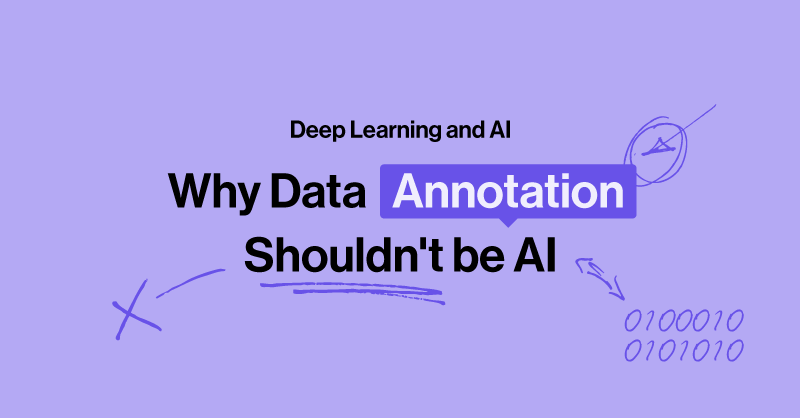The Relationship Between AI and Data Annotation
Artificial intelligence (AI) is undergoing a transformative revolution, with its adoption and integration in various fields on the rise. From image generation and large language models to self-driving cars and advanced search engines, AI plays an increasingly significant role in automating complex, human-like tasks. These AI models rely on vast amounts of real-world data for training, allowing them to learn and develop into powerful tools.
While unsupervised learning is a popular approach for training AI models, it can sometimes lead to unintended patterns or conclusions. This is because neural networks are often "black boxes," making it difficult to understand how they arrive at a given outcome. Therefore, every piece of data is crucial, and annotating it correctly is essential for building reliable AI systems.
What Is Data Annotation for Machine Learning and AI?
Data annotation is the process of labeling data to make it understandable for machine learning and AI models. This process involves categorizing and tagging elements within the data before feeding it into a model. Accurate data annotation is critical for AI models to learn effectively and make correct predictions. It also provides a means to fine-tune models, allowing for improved performance and relevance.
Consider an example where a model is trained to detect inappropriate language in professional documents. Proper data annotation allows specific colloquial statements to be tagged as undesirable, guiding the AI to identify and correct them. Similarly, in sentiment analysis for product reviews, phrases like "it could be worse" or "love the purely decorative warning lights" require careful annotation to account for sarcasm and ambiguity.

Guidelines for Data Annotation
Proper data annotation requires a clear strategy and human oversight, even when using AI tools. Here are key factors to consider:
Clarity and Consistency
Define specific guidelines to ensure consistent labeling, especially in edge cases or ambiguous scenarios. While AI data labeling algorithms are improving, they may struggle with context or nuanced data which is where human judgment becomes invaluable.
Relevance
Data relevance is crucial for training AI models. AI can struggle with contextual judgment, so human input is necessary to determine which data is domain-relevant and ensure the dataset is not cluttered with extraneous information.
Quality and Accuracy
Human oversight is essential to ensure high-quality data annotation. While AI algorithms can identify data entry errors like blank cells or outliers, they might miss contextual issues that humans can easily detect and correct.
Limitations of Using AI for Data Annotation
While AI can be efficient, it lacks the contextual understanding that comes with human experience. Fully relying on AI for data annotation can lead to errors that might cascade into significant problems in AI training. Here are some examples of situations where AI-based annotation without human supervision might fail:
Ambiguity and Context
AI often struggles with context or ambiguity. For instance, a phrase like "I heard it was good" could have a positive or negative meaning depending on context. An AI might interpret it as positive due to the word "good," but human annotators would recognize the need for context.
Interpretive Subjectivity
Subjective interpretations are challenging for AI. Words like "beautiful" or "ugly" can have different connotations depending on the context. Humans can understand these nuances and apply them accurately in data annotation.
Idioms and Hyperboles
AI might misinterpret idiomatic expressions or hyperbolic language. Humans, however, can use context clues to understand and annotate these linguistic elements correctly.
Conclusion
Data annotation and human oversight are essential components in building successful and ethical AI systems. While AI has its place in the workflow, human intervention is crucial for context, consistency, and quality. By focusing on clarity, relevance, and accuracy in data annotation, you can create more reliable and effective AI models while minimizing the risks of automation-related biases. Ultimately, a combination of AI efficiency and human insight is the key to developing robust AI applications.


